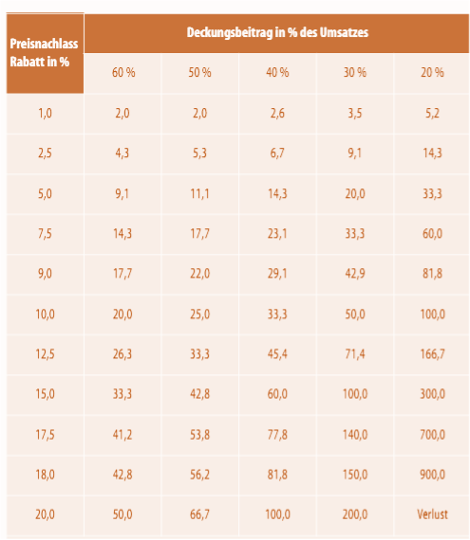PRICE NEGOTIATION TIPS | HOW TO CONDUCT A PROFESSIONAL PRICE NEGOTIATION
Discount is a Moroccan city and we always follow QUID PRO QUO
Even small discounts can have a fatal effect on a company’s profits. Many sellers are not sufficiently aware of this. As a result, they are often quick to offer discounts during contract negotiations.
THE PSYCHOLOGY OF BUYERS
Buyers often exert psychological pressure on sellers. Statements such as “You are too expensive. I have a competitive offer that’s five per cent cheaper” or “If you don’t meet me halfway on price, I can’t give you the order” are common phrases. Because they hear these statements in almost every customer conversation, many salespeople believe them themselves: We are too expensive. As a result, they are quick to offer discounts – often not realising that even small discounts can be fatal to their company’s bottom line. Let me give you an example.
EVEN SMALL DISCOUNTS HAVE SERIOUS CONSEQUENCES
Let us assume that your company generates an annual turnover of €100,000 with a particular customer, with a profit margin of five percent. Then your company makes a profit of €5,000 a year from that customer. If you give a discount of only one per cent, the profit margin falls from five per cent to four per cent, or by 20 per cent to €4,000. If you give a two percent discount, the profit margin drops by 40% to €3,000. Your company has already given away almost half of its profit. You and your employees should therefore defend the existing prices with all your might.
To do this, certain conditions must be met. First and foremost, you must stand behind your company’s prices and services and not believe the buyer’s statement that you are too expensive. After all, what is the role of buyers? To buy as “cheaply” as possible. So they always have to explore how much of a discount they can get – for example, by threatening: “If you don’t meet us halfway on price, then…” And to make sure they have negotiated well.
BUYERS MUST BUY “COST-EFFECTIVELY”
The buyer’s job is to filter through the offers to find the one that gives his company the best value for money. As a seller, you should therefore be aware of the benefits you offer your customers – not only from a technical point of view. But also, for example, because your company always delivers reliably. Or because your engineers can be on site within an hour in an emergency. Or because you know the customer organisation’s needs from working with them for many years. Or because the more benefits you can point to, the easier it is to sell.
Note: Discount is a city in Morocco and we always follow the principle of QUID PRO QUO.
For example, by saying: “I am happy to reduce the price of the circuits. But we will no longer be able to provide the service”. Or: “In that case, we will have to charge separately for the service in the future. You will find that customers generally do not want to give up the delivery benefits you have mentioned, even if they say, “In the end, it is all about price”. However, this requires you to show the customer the added value you offer. This is the challenge of value-added and service offerings: if you regularly give them to customers, they will take them for granted. It is only when you take them away or charge for them separately that they become aware of their value.
IT IS EASIER TO NEGOTIATE PRICES THAN TO WIN NEW CUSTOMERS
To be confident in price negotiations, you need to believe in the prices and services your company offers. You must also be aware of the negative impact that even small price reductions can have on your company’s profits and your success as a salesperson.
Have you ever thought about how much new business you need to generate to compensate for the discounts you give? Let’s take the example above: with a profit margin of 5% and an annual turnover of €100,000, you need to generate €20,000 in new orders to compensate for a 1% price reduction. For a 2% reduction, you need €40,000 in new orders to offset the loss. Which is easier? To increase prices by 1% (or give 1% less discount) to an existing customer, or to generate new orders of that size?
Therefore, salespeople should defend their prices with all their might so that they can more easily achieve their profit targets.
Reading example: So far you have achieved a contribution margin of 20% of sales. Now you “must/can/want” to give a discount of 5.0% of sales. From the table, you can see that your sales must increase by 33.3% in order to return to your previous contribution margin volume!
There is an Excel file with this table where the values can be adjusted. Good luck!
Inspiration for this article came from Peter Schreiber.
I SUPPORT YOU ON THE WAY TO YOUR SUCCESS
I am a strategist, an innovator, an unconventional thinker, a mover and shaker and therefore I do the right things sooner and better.
And with pleasure also for you.
Together we can discover new market opportunities, steer product branding into the right direction, understand your customers better – and stand out from the competition with tailor-made products for your target group. All this leads to more customer satisfaction, greater customer lifetime value and more sales potential.
Can you afford not to go for it?







